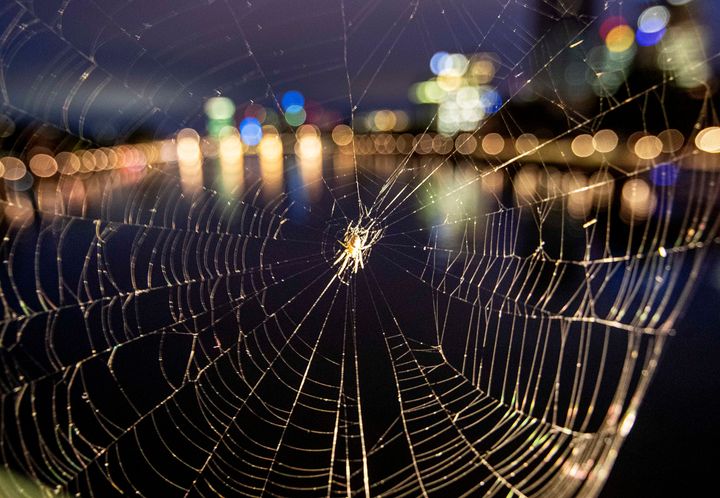
As an arachnophobe, I always feel like the victim of a psyop whenever someone tells me the fearsome creature scuttling up my arm is “just a money spider!”.
Firstly, it’s still got eight legs and eight eyes. Too many for me, thanks.
And secondly, the name doesn’t make any sense ― I reckon I’d get over my fears realllly fast if those incy-wincy spiders actually gave me some dosh.
We’ve written before at HuffPost UK about how everything from HARIBO sweets to HobNob biscuits got their name.
But how come money spiders got called that?
It’s got to do with hair (yes, really)
Per the British Arachnological Society (BAS), the shiny black critters we know as “money spiders” are officially called Erigone.
They can pull off a really cool trick when they want to move around ― the 5mm-or-less-long spiders release a strand of silk which gets caught by the wind.
This allows them to sort of “fly” away, and is called “ballooning.”
Millions of “money spiders” take this unorthodox commute throughout the year, BAS shared.
“This is how spiders occasionally get caught in people’s hair,” BAS says.
“It was thought when this happened the person would be coming into money - hence the name money spider!”
Apparently, you’re meant to spin them around your head by their web before you let them go for an extra-long run of luck.
Oh!
Aside from hang-gliding through the air on a self-made, super-skinny kite, money spiders are also distinctive because of the netting-like webs they weave over bushes.
The Natural History Museum says these are “sheet webs.”
“The money spider hangs beneath its web, waiting for dinner to land above,” their site reads; the contraptions look “like silken hammocks adorning grass and low bushes.”
If you do believe in the luckiness of money spiders, here’s some good news ― the family the species belongs to, Linyphiidae, is the largest in the UK.
It contains over 280 sub-species and accounts for about 40% of our spider population (woah).
Who knew?